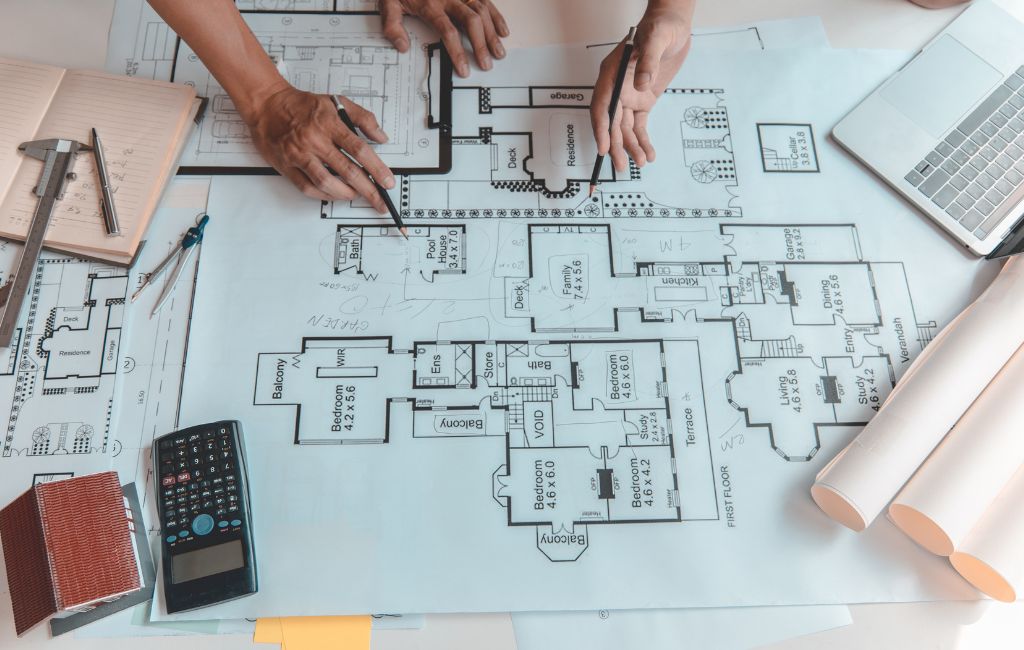Architect Transforming Ideas Into Reality
Collaborating with an architect can be a transformative experience, turning abstract ideas into tangible structures. This article explores the process of working with an architect, from initial concepts to the final build, and highlights the benefits of professional architectural services.
The Role of an Architect
An architect is more than just a designer; they are a problem solver, a project manager, and a visionary. Their role encompasses various stages of a project, including:
- Conceptual Design
- Detailed Planning
- Project Management
- Construction Supervision
Each stage requires a unique set of skills and expertise, ensuring that the project not only meets aesthetic goals but also adheres to safety standards and budget constraints.
Initial Consultation and Conceptual Design
The journey begins with an initial consultation where the architect and client discuss the project’s vision, requirements, and constraints. This stage is crucial for understanding the client’s needs and setting realistic expectations.
During the conceptual design phase, the architect creates preliminary sketches and models to visualize the project. These early designs help in identifying potential challenges and refining the vision. For instance, a residential project might start with sketches of floor plans and elevations, providing a clear picture of the proposed layout.
Detailed Planning and Design Development
Once the conceptual design is approved, the architect moves on to detailed planning. This involves creating comprehensive drawings and specifications that outline every aspect of the project. Key elements include:
- Structural Details
- Electrical and Plumbing Plans
- Material Specifications
- Cost Estimates
Detailed planning ensures that all components of the project are well-coordinated and that potential issues are addressed before construction begins. For example, in a commercial building project, detailed plans might include HVAC systems, fire safety measures, and accessibility features.
Project Management and Coordination
Effective project management is essential for the successful execution of any architectural project. The architect plays a pivotal role in coordinating various stakeholders, including contractors, engineers, and suppliers. Responsibilities during this phase include:
- Scheduling and Timeline Management
- Budget Monitoring
- Quality Control
- Communication with Stakeholders
By overseeing these aspects, the architect ensures that the project stays on track and meets the desired quality standards. For instance, in a large-scale infrastructure project, the architect might coordinate with multiple contractors to ensure timely completion and adherence to safety regulations.
Construction Supervision and Final Touches
During the construction phase, the architect’s role shifts to supervision and quality assurance. Regular site visits and inspections help in monitoring progress and addressing any issues that arise. Key activities include:
- Site Inspections
- Reviewing Workmanship
- Ensuring Compliance with Plans
- Finalizing Design Details
For example, in a residential renovation project, the architect might inspect the installation of custom cabinetry or verify that finishes match the approved design. This hands-on involvement ensures that the final product aligns with the client’s vision.
Case Studies: Real-World Examples
To illustrate the impact of working with an architect, consider the following case studies:
Case Study 1: Sustainable Home Design
A family in California wanted to build an eco-friendly home that minimized environmental impact. The architect designed a house with solar panels, rainwater harvesting systems, and energy-efficient materials. The result was a beautiful, sustainable home that reduced energy costs by 40%.
Case Study 2: Urban Office Space
A tech startup in New York City needed a dynamic office space that fostered creativity and collaboration. The architect transformed an old warehouse into a modern workspace with open-plan areas, breakout rooms, and state-of-the-art facilities. Employee satisfaction and productivity increased significantly after the move.
Statistics and Benefits
Working with an architect offers numerous benefits, supported by industry statistics:
- Projects designed by architects are 20% more likely to be completed on time and within budget.
- Architect-designed buildings often have higher resale values, with an average increase of 10-15%.
- Sustainable designs by architects can reduce energy consumption by up to 50%.
These statistics highlight the value of professional architectural services in achieving successful project outcomes.
Conclusion
Collaborating with an architect can transform your ideas into reality, ensuring that your project is well-designed, efficiently managed, and beautifully executed. From initial concepts to final construction, architects bring expertise, creativity, and precision to every stage of the process. Whether you’re building a home, renovating an office, or embarking on a large-scale development, working with an architect can make all the difference in achieving your vision.
